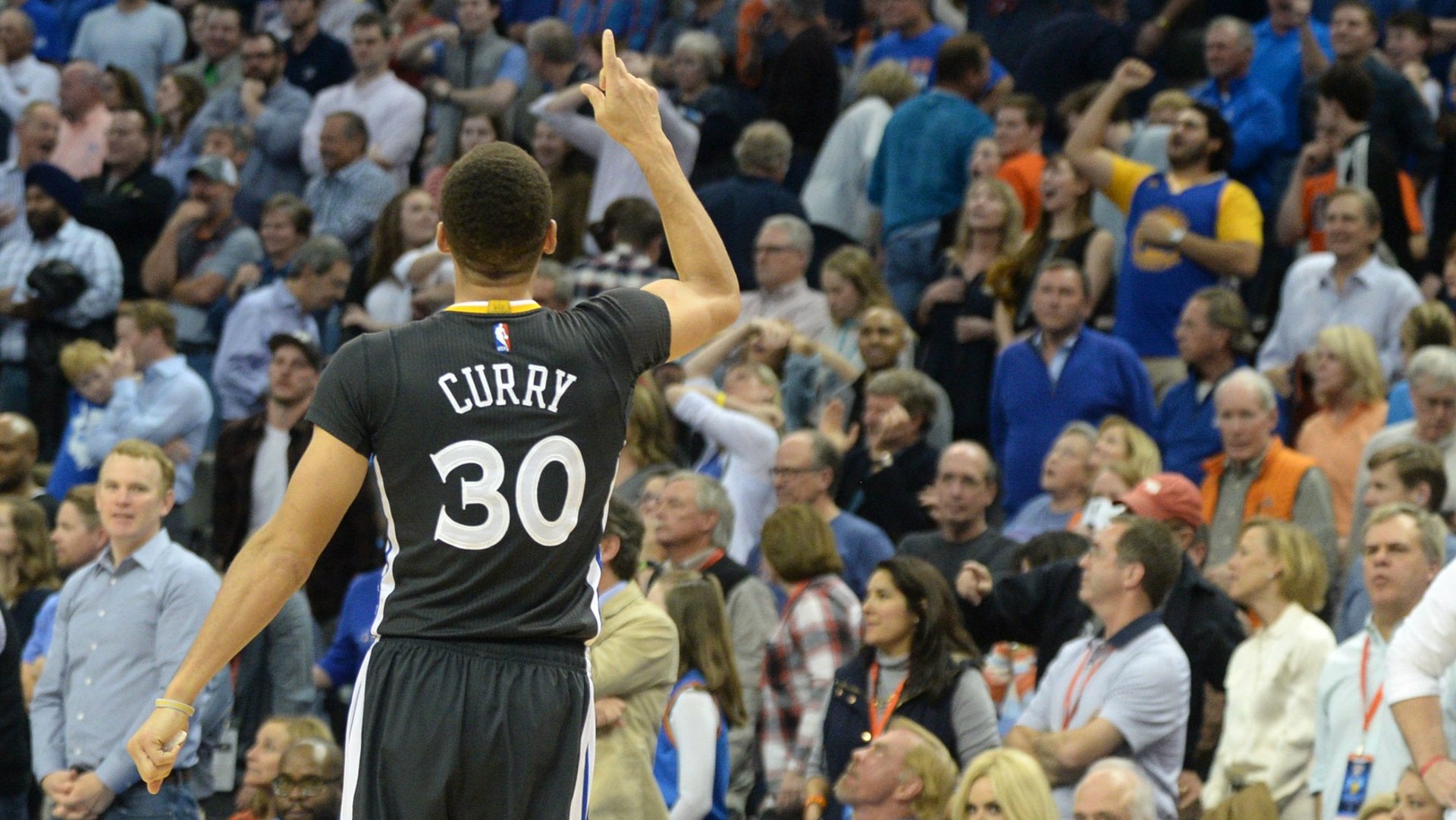An MIT physicist analyzes Stephen Curry’s “impossible” game-winning three-point shot
On Saturday night (Feb. 27), Golden State Warriors point guard Stephen Curry made a stunning shot. With 0.6 seconds left in overtime and his team tied with Oklahoma City Thunder, 118-118, Curry aimed for the basketball hoop 38 feet away and actually made the shot, winning the game by three points.


On Saturday night (Feb. 27), Golden State Warriors point guard Stephen Curry made a stunning shot. With 0.6 seconds left in overtime and his team tied with Oklahoma City Thunder, 118-118, Curry aimed for the basketball hoop 38 feet away and actually made the shot, winning the game by three points.
The crowd erupted, Twitter went wild, and sports commentators did not skimp on the hyperbole to describe Curry’s “near impossible” feat.
In case you missed it, here it is:
But how “impossible” was this shot exactly? We turned to MIT post-doc physics researcher Brian Skinner, an avid basketball fan who has researched the mathematics of the sport.
To make the basket, Skinner explains that two factors were particularly critical: the shot’s direction and the velocity of the ball release. “The angular accuracy of the shot would have to be something like 0.6 degrees, which is something like the angular width of a doorway that is 86 yards [78.64 meters or 258 ft] away,” he says.
And the ball traveled at precisely the right speed. “The release speed of that shot was something like 23.8 mph, and it had to be accurate to within one half of one percent,” says Skinner. That is, if Curry released the ball any slower than 23.7 mph or faster than 23.9 mph, it would have missed.
To put a number to the theoretical probability of making Curry’s shot, Skinner pulled in the experts from the basketball analytics website Nylon Calculus. Factoring in Curry’s distance from the basket, the proximity of the nearest defender (shooting guard André Roberson), the four-inch height difference between Curry and Roberson, and other shooting data from the past three seasons, they produced an estimate of the difficulty of the shot. A shot like the one Curry took, they determined, would be expected to go in only about 17% of the time.
By the end of that dramatic game, Curry had made 12 three-point shots, tying the NBA’s single-game record. At 27, many already hail the Ohio native as among the best shooters ever in the league’s 70-year history.